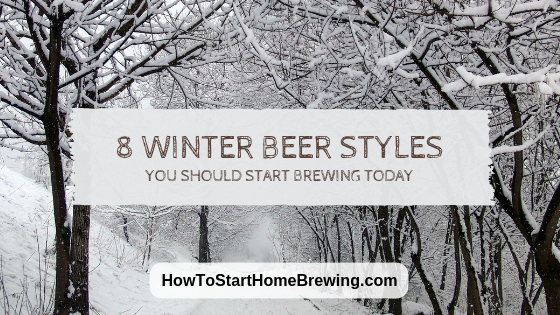Living in the Midwest, I have to admit that fall is my favorite time of year! Football is everywhere, leaves are changing, and temperatures drop to the point where it’s cool enough for a hoodie, yet still warm enough for shorts (some days, anyway).
Oh, and I can’t forget the various great fall beers that start to creep their way into brewing cycle.
And yet, here we are, already thinking about winter beer styles. Better to be prepared than not, right?
That said, it’s time to start drumming up some ideas on what beers make the winter a bit more survivable (at least for those of us stuck in the colder areas of the States and the rest of the world).
My Favorite Winter Beer Styles
As the seasons start to change, so do my beers in rotation.
Don’t get me wrong – I still brew plenty of IPA’s, Pale Ales, and some Light Lagers. That’ll never change, but I’d be lying if I said I didn’t make the shift to bring darker styles into the mix as the weather changes.
When it’s hot outside, I prefer to keep my beers light and refreshing. The last thing I want to reach for is a super thick stout after spending a day in the heat.
Maybe it’s just me, but the appeal of darker styles doesn’t really pick up until the seasons change.
Whether you’re in the same boat or just want to find something dark and strong to brew for the winter months ahead, fear not – I’ve got you covered.
Below, you will find 8 of my favorite winter beer styles that I lean on to help battle the cold stretches of the year. Many of these styles can go from grain to glass in 6-7 weeks. I should note that some can be ready slightly faster than that, while some of the bigger beers tend to gain more flavor with extended aging.
Either way, getting your start now will give you plenty of time to brew up a fantastic winter warmer!
1) Porter
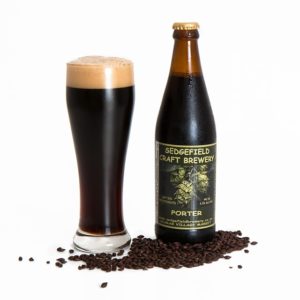
Often seen as a style that is traditionally available year-round, Porter is an easy-drinking, dark colored beer. Originating from London, England, Porter has both American and English variants:
- American Porter (BJCP category 20A) tends to have a complex malty character with a dry finish, and contains a medium to high hop bitterness (or very little).
- English Porter (BJCP category 13C) is also malty, yet has more roasted, toffee, nutty, and caramel characteristics. Bitterness is also lower when compared to an American Porter.
- There is also Baltic Porter (BJCP category 9C), which is similar to an English Porter, except that it has a restrained roast character and is significantly stronger. It also has layers of various malt and fruit flavors.
Alcohol volume can range on the lower end (such as 4.5%) on up to 6.5% (or a touch more). Not overwhelming, but enough to deliver the punch you need.
One of the things I love about Porter is that it’s a style that is fairly easy to brew. It also leaves a lot of room for customization.
For example, I created a Peanut Butter Porter that scored very well in a competition about just under a year ago (more on that here). It was full-bodied with slight roasted and peanut butter aroma. The peanut butter flavor was balanced exceptionally well with the malt. It was more unique than anything I had done before and ended up being a perfect fit for the colder weather months.
Now that I think of it, I may just give this one another go now that I’ve got another year of experience under my belt!
2) Stout
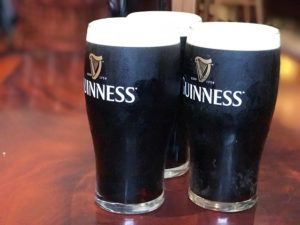
Much like Porter, Stouts are another style that tend to hang around for most of the year. While many folks might enjoy a Guinness in the spring, summer, and fall, it’s really the winter months that see a surge in production of this style.
Unsurprisingly, Stouts were actually birthed from Porters. It was used as a term to describe a Porter that had more “strength” overall. A strong Porter was coined “Stout Porter”, but the “Porter” was eventually dropped in favor of what we all know as a Stout today.
And yet again, similar to Porter, there are plenty of variations of the Stout style. The common styles currently out there are the following:
- Irish Stout (BJCP category 15B)
- Sweet Stout (BJCP category 16A)
- Oatmeal Stout (BJCP category 16B)
- Tropical Stout (BJCP category 16C)
- Foreign Extra Stout (BJCP category 16D)
- American Stout (BJCP category 20B)
- Imperial Stout (BJCP category 20C)
During the colder months, it’s common to see more of the Imperial and Barrel-Aged Stout varieties. These come packed with complex and unique flavors along with a hefty ABV (at least 7% and up). Many are extremely thick, smooth, and full-bodied with low carbonation. They are meant to be consumed slower so that the complexity of flavors can be fully enjoyed.
Brewing up a stout can be as straightforward or as complex as you wish it to be. Your process and recipe will vary depending on what style you decide to roll with.
The key to a great Stout is obtaining the signature roasted flavor and aroma without introducing any astringent or acrid flavors. Make sure to keep mash temps in check and don’t go overboard on darker malts. Believe me when I say that a little goes a long way.
If you’re dead set on whipping up a strong Stout, it’s usually best to start a bit earlier in the year so it has time to age. It isn’t necessary, but it’ll help round out some of the alcohol flavors that can be stronger when the beer is young. Smaller stouts, however, can be brewed and ready for consumption following a typical ale timeline (4-6 weeks).
One thing to consider: If you want to learn how to brew a great Porter or Stout right out of the gate, this book will help tremendously. It’s filled with a lot of excellent recipes that are proven to be top-notch. As someone who has had some trouble with brewing excellent darker beers, it’s been a fantastic resource.
3) Spiced Ale
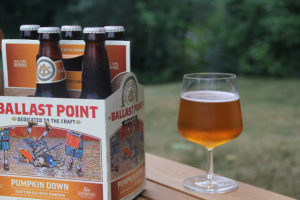
A few months before the end of every year, spiced ales start taking up space on store shelves across America. It should come as no surprise when you consider how many holidays are packed into the last 3 months of the year.
What does that mean for you? Let’s just say it’s the perfect time to brew up that Egg Nog Stout, Gingerbread Brown, or Cranberry Spiced Wheat you’ve been itching to make!
If you’ve never made a Spiced Ale (BJCP category 30A) before, you might be wondering where you should start.
Honestly, it’s not too difficult to get something put together. A variety of beer styles can be used as your base, but the most common are:
- Amber Ale
- Brown Ale
- Stout
- Porter
- Wheat Ale
The real magic happens with how you plan to utilize your spices, as well as what you decide to actually use.
Whenever I make a Spiced Ale, I tend to go with a simple grain bill and a single bittering charge of a neutral (and high AA%) hop at 60 minutes. It’s enough to balance out the malt, but leaves me plenty of room to let all my spices shine through. Omitting any late additions prevents any hop aroma/flavor compounds from clashing with spice additions.
Of course, you don’t have to do this. You could go the opposite route and use hops to your advantage.
For example, you could whip up a Spruce Tip IPA. Using a combination of spruce tips along with hops that provide a piney, dank aroma, it’s the perfect combo to where hops can play in your favor.
No matter what route you decide to take, remember to have fun and use spices with a light hand. Too much of something is an easy way to turn a great beer into a sink dumper. Research other recipes online as you develop your own, as it will help you figure out a solid starting point to work from.
Better yet, you could always simplify things and pick up a Holiday Ale Kit instead.
4) Dubbel
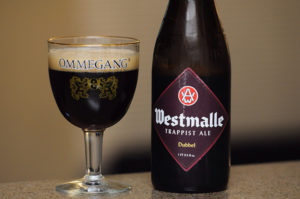
Nothing is better than sitting down on a cold night with a Belgian Dubbel (BJCP category 26B). Filled with rich malt flavor, dark and/or dried fruity esters, and a hint of alcohol, it’s the perfect beer to warm you up on a cold night.
A type of Trappist Ale, the Dubbel style was first brewed in Westmalle Abbey back in 1856. At the time, it was known more as a strong Brown Ale, most notably from it’s deep, reddish/copper hue.
Most Dubbels are usually higher in ABV compared to today’s Brown Ales (most variations range between 6-8%). It’s dark fruit flavors can be obtained through specialty malts, such as Special B. As for the traditional light spicy phenol character, it is usually derived from the use of traditional Belgian yeast strains.
Brewing up a decent tasting Dubbel isn’t too much of a task. A sound malt bill with a base of Pilsner and Munich malt sets the tone. As mentioned above, an addition of Special B Malt will lend nice raisin flavors. Top things off with a touch of Black Patent or De-husked Carafa, and you’ll be marveling in the deep copper color that is true to style.
One other ingredient that is a necessity in brewing Belgian styles is dark candi sugar/syrup. Not only can this lend sweet and burnt sugar flavors, but it also helps you reach your target gravity, thus boosting your overall ABV.
When it comes to hops, one of my favorites to use for this style are Styrian Goldings. They play really well with the malt and the esters from Belgian yeast (which is necessary for this style to produce the esters that make this beer a true “Belgian” beer).
As always, there are plenty of options to make your Dubbel unique, so feel free to do some research and play around with things a bit to make the beer you want. It’s a fun style to brew and will help you appreciate Belgian styles overall!
5) Bock
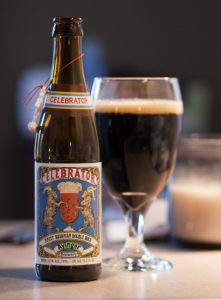
While we’ve touched on some of the most common dark styles (Stout and Porter), it’s time to get into the richer, maltier styles. If that sounds up your alley, then a Bock might be the next style for you to aim for next time you’re ready to brew!
Bocks are a strong dark lager that originated in Germany. The strong and dark proponents of this beer make it easy to see why its an excellent winter beer style.
When it comes to variations, you’re in luck, as there are plenty of Bocks to choose from, such as:
- Doppelbock (BJCP category 9A)
- Eisbock (BJCP category 9B)
- Dunkles Bock (BJCP category 6C)
- Weizenbock (BJCP category 10C)
- Helles Bock (aka Maibock) (BJCP category 4C)
Each variation is unique in its own right, but all of them have a couple things in common: rich, malty flavors and a higher ABV when compared to some of their lighter counterparts (i.e. Hefeweizen/Dunkelweiss, Helles, and Dunkel).
Brewing a Bock may require a bit more work than most styles, especially if you plan to stick to more traditional brewing processes (such as using a decoction mash schedule). The extra effort may be worth it, but it’s certainly not a requirement. For most brewers who are comfortable with their process, a couple small adjustments, a solid recipe, and some good research can net you a decent beer on your first try!
Since there are a large number of style variations with each quite different from the other, I won’t dive into the specifics of brewing each one. There are, however, plenty of various Bock recipes that can easily be found online, as well as beer kits that are formulated for you and ready-to-go right out of the box.
Don’t be afraid to give this style a shot. When you do, you’ll be rewarded with a tasty, warming winter beer that will keep you happy as you plow through the next cold and blustery day!
6) Wee Heavy
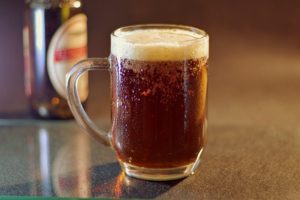
If I’m being honest, one of the best winter beer styles (in my opinion) is none other than the luscious Wee Heavy!
More commonly known as a “strong Scotch Ale”, the traditional Wee Heavy is a dark, rich, and complex malty beer. It’s chock full of delicate caramel flavors and typically has a thick, full body. A nice alcohol note rounds out the flavor, giving it a nice feeling of warmth.
It’s a big, uniquely complex beer, and one that you should absolutely take a stab at if you’re feeling a little adventurous!
Believe it or not, brewing a good Wee Heavy can be done with relative ease. You won’t need to introduce any advanced techniques. In fact, a single infusion mash is suitable.
The biggest key to producing the layered caramel flavors is in the boil (usually 90-120 minutes in length). The longer boil concentrates the wort and increases melandoidins, something that the grain can’t do on its own. The malt flavors come through sweet, but not cloying, as a small bittering addition gives it just enough balance.
Another thing to think about when brewing this style is fermentation temperature. A Wee Heavy does best with a Scottish yeast and cooler fermentation temperatures (between 60°F-65°F). Keeping things cooler will reduce the chances of producing any significant esters, which can dramatically change the outcome of this beer.
7) Dunkelweiss
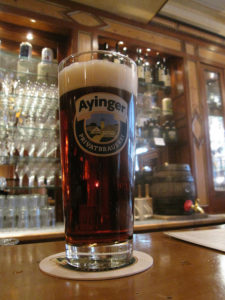
In the summer after a long and hot day, a nice, refreshing German Hefeweizen really hits the spot. Rich in clove and banana flavor/aroma with a smooth, creamy mouthfeel, it’s a fantastic style that can be enjoyed all year long.
However, there comes a time when you want to change things up. You know you want a traditional Hefeweizen, but with a little more “oomph” to it.
That, my friends, means it’s the perfect time to whip up a Dunkelweiss!
Dunkelweiss (BJCP category 10B) is a bit of a spin on a regular Hefeweizen. It contains all of the same flavors that you know and love (clove/banana), except it utilizes darker malts to introduce caramel and toasted bread flavors. It’s a unique and flavorful experience. Even better – the recipe is fairly simple and non-complex!
Instead of the traditional Hefeweizen grain bill (a blend of Pilsner and Wheat malt), a Dunkelweiss allows for a bit more. A blend of Pilsner, Wheat, and Munich malt (or just Munich and Wheat malt) sets the tone, with a touch of CaraMunich malt to provide caramel flavors and color enhancement.
Other than the malt bill, the process remains the same as a Hefeweizen. Single infusion mashes will work fine, but you can kick things up a notch by utilizing step-mashing. At a bare minimum, an acid rest at 114°F will help produce the precursors that enhance the signature clove flavors.
To keep things from getting too sweet, a single hop addition (around 8-12 IBU’s) at 60 minutes with noble German hops provides enough bitterness to keep things in check.
Remember – the idea here is to keep it simple. The key to flavor relies more on your process more than your recipe. Use a traditional Hefeweizen yeast with a sound fermentation schedule, and you’ll be ready to enjoy your Dunkelweiss in no time!
8) Barleywine
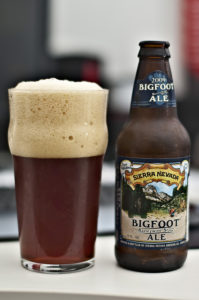
Rounding off our list of winter beer styles is the elusive Barleywine. It’s a complex blend of deep, rich, and malty flavors, yet comes with enough hop bitterness to keep things in check.
One common misconception some have is that the beer is “wine-like” (hence the name); however, it’s not even close. As quoted in Wikipedia, the use of “wine” in the name is “due to it’s alcoholic strength similar to wine“. All of its fermentables comes from grain, rather than grapes, making this nothing more than a strong and complex beer.
That said, it should be no surprise that Barleywine packs a hefty ABV (usually 10%+). It’s not a beer to take lightly and should be enjoyed at a slower pace, so as to appreciate the complex malt and hop flavors.
Two varieties of Barleywine exist – American (BJCP category 22C) and English (BJCP category 17D). American Barleywine packs a bit more bitterness, hop flavor and are generally light to amber in color, whereas it’s English brother has nearly the opposite – lighter bitterness, minimal hop flavor, and a dark amber to nearly black color.
There is also another variation known as a Wheatwine (BJCP category 22D). It is similar to an American Barleywine, however, there are some slight variances, such as:
- It utilizes more wheat in the grain bill
- It is typically lighter in color
- It’s less bitter and has more yeast derived fruit flavors
Brewing a Barleywine is similar to most beers in that the process is relatively the same. The major difference, however, is a hefty grain bill. It’s what enables you to hit a high gravity, as well as obtain the body and mouthfeel that the style is known for. How you brew it is up to what variation you are trying to create (either American or English).
Some quick brewing tips:
- Start with browsing recipes that have been proven before. One thing I like to do before attempting a style I haven’t brewed is to check out the list of winning NHC beers (you can find them here if you’re an AHA member).
- Use a yeast that is built for tolerating high alcohol. The last thing you want in your beer are overpowering alcohol and hot, solvent-like notes.
- Fermentation temperature control is key to obtaining the right amount of character without introducing “hot” alcohol flavors. Keep an eye on it and don’t let it encounter major swings in temperature.
- Learn that this beer style gets better with age. The longer you can cellar your beer, the more time the malt flavor has to meddle and increase complexity.
Although I have yet to brew up a big beer like this, it’s definitely on my personal list to try in the near future. Until then, I’ll dabble in the fantastic flavors of some aged Bigfoot Barleywine from Sierra Nevada (which is an excellent representation of this style).
Start Brewing Your Favorite Winter Beer Styles Now
After reading through the variety of winter beer styles above, you should have a better idea of what is possible. Brewing these styles can be a lot fun, and they produce a challenge that your typical Pale Ale and IPA does not.
Again, that doesn’t mean you should stop brewing what you like, but as a homebrewer, it’s always fun to create something different.
Do you have a winter beer style preference or a favorite recipe that you like to brew when the bitter cold hits? If so, let us know in the comments!

